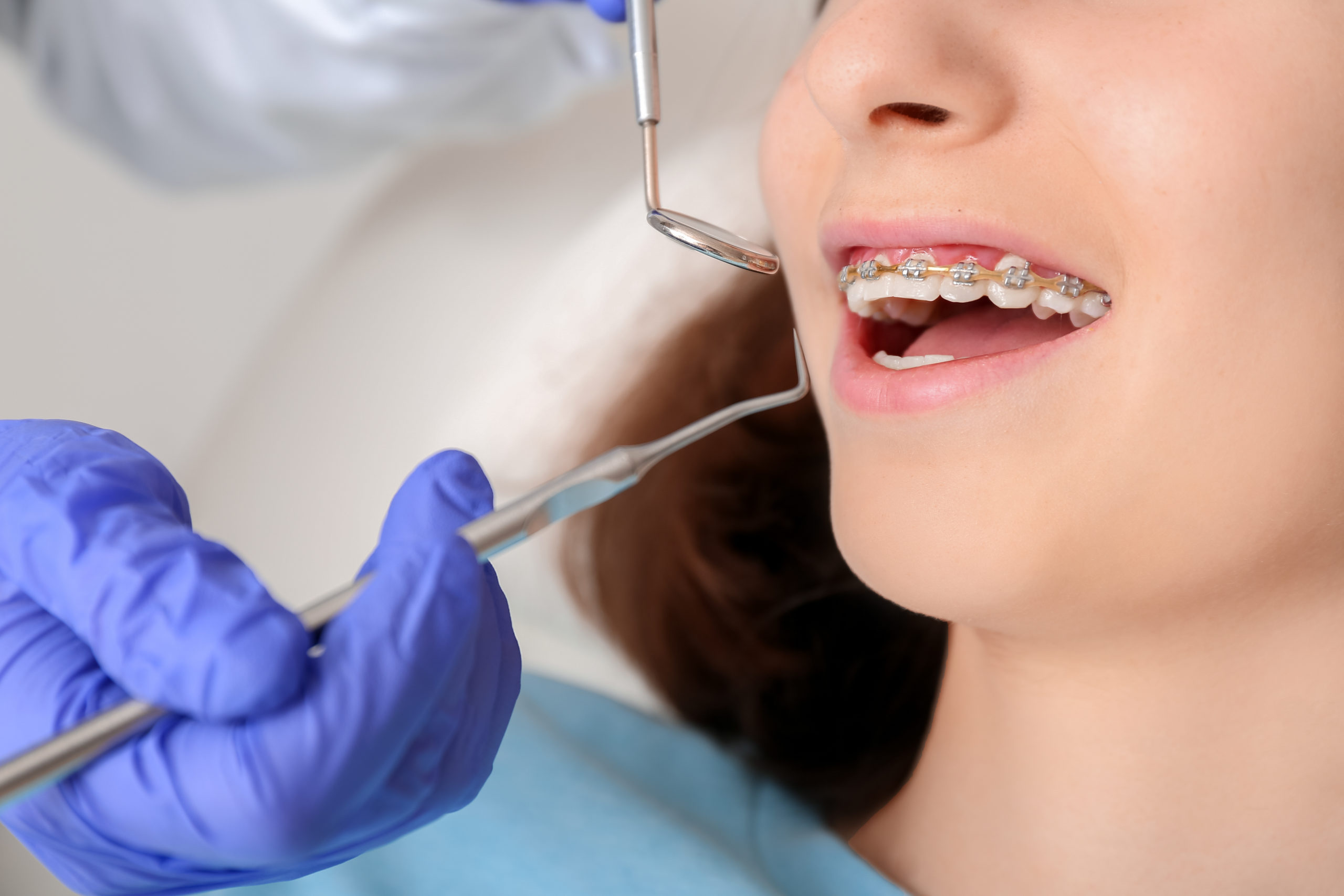How Cumming Orthodontics Can Transform Your Smile with Invisalign and Braces
How Cumming Orthodontics Can Transform Your Smile with Invisalign and Braces
Blog Article
Comprehensive Overview to Orthodontics Procedures for Fixing Oral Imbalances
In the realm of orthodontics, the journey to attaining a flawlessly lined up smile involves a myriad of treatments tailored to correct oral misalignments. From traditional dental braces to undetectable aligners and even medical choices, the field of orthodontics uses a variety of solutions to resolve varying degrees of oral irregularities. Comprehending the complexities of each treatment, including their systems, advantages, and prospective downsides, is vital in making informed choices about one's orthodontic therapy. As we navigate with the comprehensive overview to orthodontic treatments for fixing oral misalignments, the detailed details of each technique will unfold, losing light on the path towards a harmonious and useful oral positioning.
Orthodontic Procedures Introduction

Along with traditional dental braces and clear aligners, orthodontists may likewise recommend various other treatments like headwear, palatal expanders, or retainers to resolve certain alignment problems (cumming braces). These procedures are customized per individual's unique requirements and might involve a combination of therapies to attain the preferred outcomes. Normal changes and monitoring are crucial parts of orthodontic therapy to ensure development gets on track and to make any kind of necessary adjustments in the process. By undergoing orthodontic procedures, individuals can not just achieve a straighter smile however likewise boost their total dental health and function.
Conventional Braces: How They Work
When thinking about orthodontic therapies for oral misalignments, conventional dental braces stand out as a reliable method for remedying teeth placing. Traditional braces consist of brackets, cables, and bands that function with each other to apply constant pressure on the teeth, slowly relocating them right into the wanted alignment.
As pressure is used to the teeth with the dental braces, the bone bordering the teeth is improved to sustain the new tooth placements. People will certainly require routine modifications at the orthodontist's office to make sure the braces continue to use the right pressure for effective teeth activity.
Unseen Aligners: Cons and pros
These clear, customized trays are virtually unseen when used, making them an enticing option for individuals looking for a more visually pleasing orthodontic therapy. People can remove the aligners before consuming or cleaning their teeth, reducing the risk of food obtaining stuck in the device and simplifying the cleaning process.

Surgical Orthodontic Options
Surgical interventions in orthodontics existing sensible alternatives for dealing with complicated oral imbalances that might not be properly dealt with with traditional orthodontic therapies. While unnoticeable aligners and conventional braces can fix lots of orthodontic problems, particular cases need surgical intervention to achieve optimal results. Surgical orthodontic options are generally recommended for severe malocclusions, significant jaw discrepancies, and cases where the underlying bone framework requires adjustment to accomplish appropriate alignment.
One common medical orthodontic treatment is orthognathic surgical treatment, which includes repositioning the jaws to correct useful concerns such as problem talking or chewing. This surgery is often executed in cooperation with an orthodontist who helps line up the teeth prior to and after the treatment. Surgical orthodontics may also involve treatments to reveal affected teeth, remove excess gum cells, or reshape the jawbone to create an extra harmonious face profile.
Prior to thinking about Get More Info surgical orthodontic alternatives, web link clients undergo a thorough examination to determine the need and prospective advantages of such interventions. invisalign. While surgery may appear overwhelming, it can substantially boost both the function and looks of the smile in instances where conventional orthodontic therapies fail
Retainers and Post-Treatment Treatment

Post-treatment care includes complying with the orthodontist's directions vigilantly. This may include proper oral health techniques, attending follow-up visits, and using the retainers as recommended. Failure to comply with post-treatment treatment directions can lead to relapse, where why not try these out the teeth progressively return towards their original placements. Constant retainer wear, great oral health, and routine dental exams are crucial for preserving the results attained with orthodontic surgical treatment and guaranteeing the long-term security of the remedied dental alignment.
Conclusion
Finally, orthodontic procedures offer different options for remedying dental misalignments. Typical braces make use of metal braces and cables to change teeth into appropriate placement. Unseen aligners offer an even more very discreet alternative however might not be ideal for all cases. Surgical orthodontic choices are readily available for more serious imbalances. Retainers are generally used post-treatment to maintain the new positioning. On the whole, orthodontic treatments can effectively enhance dental health and wellness and visual look.
As we browse via the thorough overview to orthodontic treatments for remedying dental misalignments, the complex information of each approach will certainly unfold, dropping light on the path toward a harmonious and functional oral placement. - cumming aligners
One of the most typical orthodontic treatments is the use of dental braces, which consist of metal braces and cables that apply mild stress to slowly shift teeth right into the preferred position.When considering orthodontic therapies for dental misalignments, typical braces stand out as a time-tested technique for fixing teeth positioning. Additionally, invisible aligners may not be suitable for intricate orthodontic concerns that need more significant teeth movement, as they are commonly advised for light to moderate instances. Retainers are tailor-made orthodontic devices created to hold teeth in their fixed placements after the completion of orthodontic therapy.
Report this page